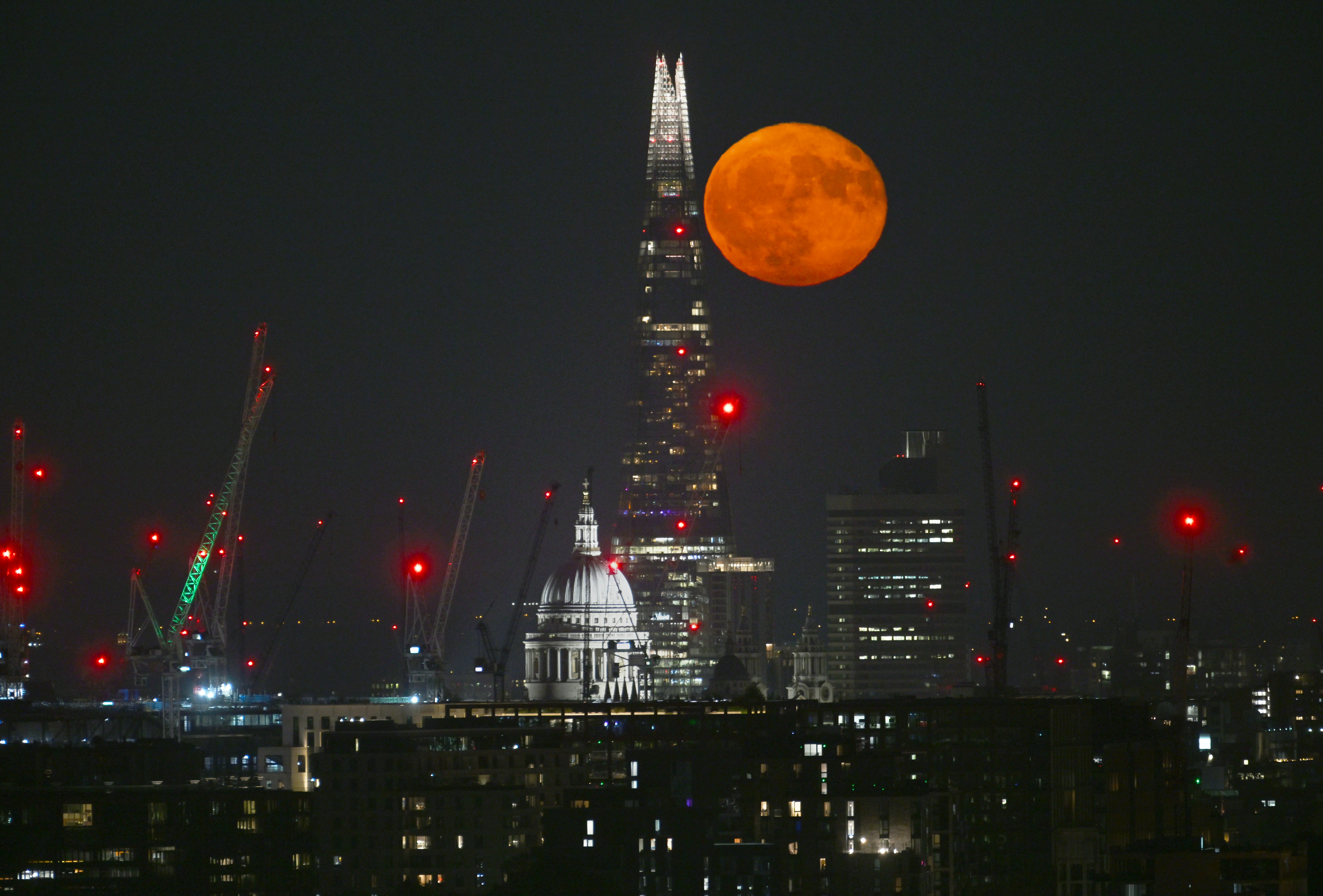
With the full Strawberry Moon looming large on the southeastern horizon, June 21 will be the darkest full Moon night of the year.
June 2024’s full Moon is the Strawberry Moon, and this year it coincides with the summer Solstice, which makes its appearance a little stranger — and darker — than usual. Read on to learn what’s going on with this year’s Strawberry Moon, how to get the best view, and how June’s full Moon may also have lent its name to a romantic tradition in the Middle Ages.

How and When to See 2024’s Strawberry Moon
June’s full Moon will be at its brightest on June 21 at 9:08 P.M. Eastern Time, but it will appear full in the sky from Thursday night through Sunday night, even if it’s only visible for a couple of hours a night in most of the continental U.S. Look very low — less than 30 degrees above the horizon — in the southeastern sky just after sunset, and the full Moon will be hard to miss. The Moon will only hang out in the sky for a few hours before dipping below the horizon again, so don’t wait until too late in the evening.
Is the Strawberry Moon Red or Pink?
Despite the name, and despite a lot of edited images (of varying quality), the Strawberry Moon isn’t red. Instead, the full Moon will look golden or yellowish orange, as it often does when it’s low on the horizon.
That’s because, at this angle, the sunlight that reflects off the Moon’s pale gray surface has to pass through a deeper cross-section of Earth’s atmosphere to reach moongazers on the ground. On the way, air scatters the relatively short wavelengths of blue light, so only the longer wavelenth colors like yellow, orange, and red make it through (all the yellow and orange keep the Moon from actually looking red). Sunsets have fiery colors for the same reason.
Because the atmosphere filters out so much of the moon’s light, this month’s full Moon will look dimmer than usual.
Why Is June’s Full Moon Called the Strawberry Moon?
The Indigenous Algonquian and Ojibwe cultures nicknamed this full Moon the Strawberry Moon because it marks the month when strawberries are ripe and ready for picking in the northeastern U.S. In Europe, people called it the Honey Moon, because June is also when honey is typically ready to harvest.
“The tradition of calling the first month of marriage the ‘honeymoon’ may be tied to this full Moon because of the custom of marrying in June,” wrote NASA’s Gordon Johnston in a blog post. “There doesn’t appear to be enough evidence to support a 19th Century theory that the word entered English from the custom of gifting newlyweds mead for their first month of marriage.”
Why is the Strawberry Moon So Low in the Sky?
A full Moon happens when the side of the Moon that faces Earth is also pointed fully towards the Sun, and the whole surface of the Moon that we can see is lit up. So when the Moon is full, it’s on exactly the opposite side of Earth from the Sun.
Meanwhile, June 20 is 2024’s summer Solstice, the day when Earth’s North Pole is tilted as far as it gets toward the Sun. That makes the Sun appear farther north than usual in the sky – and Earth’s northward tilt also keeps the Sun visible in the sky longer on the Solstice. But the opposite is also true: The Moon, which is currently on the opposite side of Earth, is at its farthest south on the night of June 20, and since Earth’s northern hemisphere is leaned toward the Sun, it’s also leaned away from the Moon. The result, if you think of the sky as a cosmic viewfinder, is the full Moon doesn’t stay in our sights very long this month.







